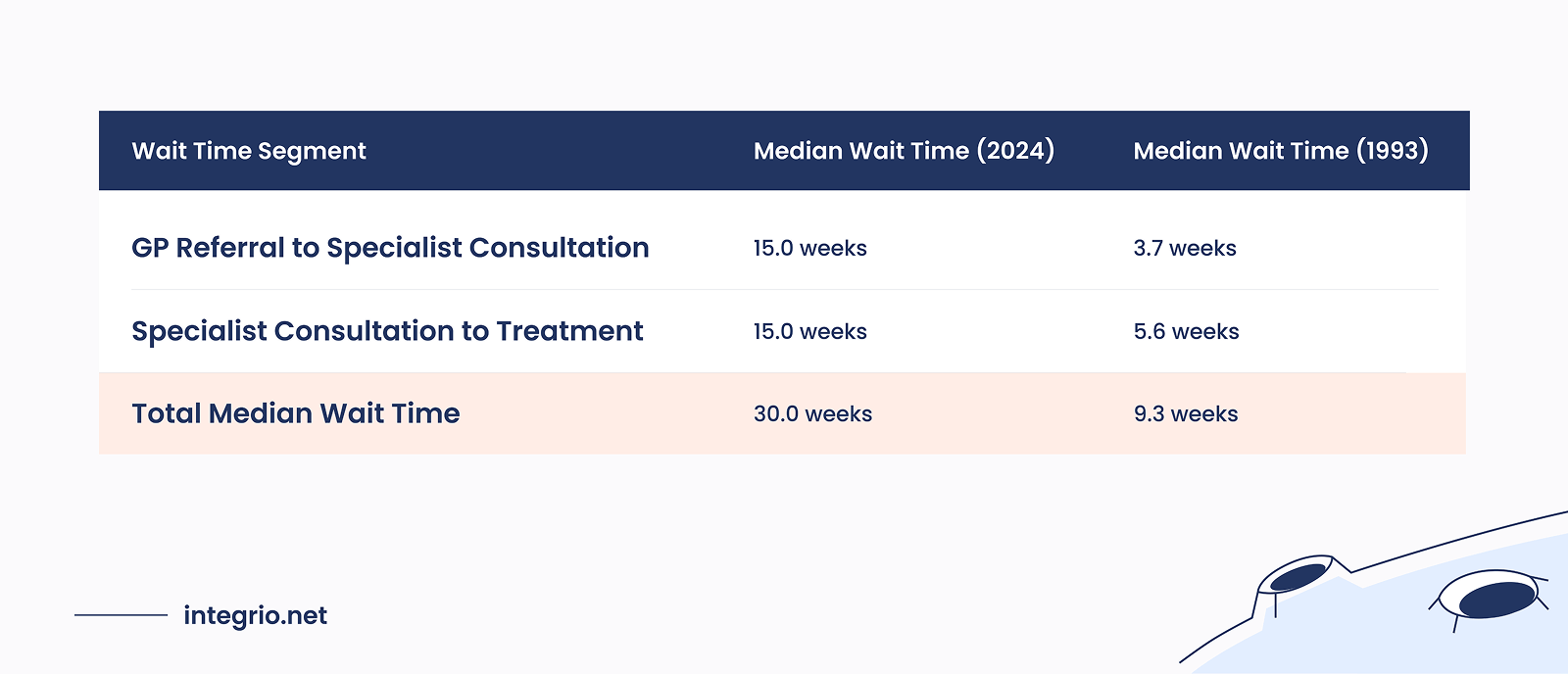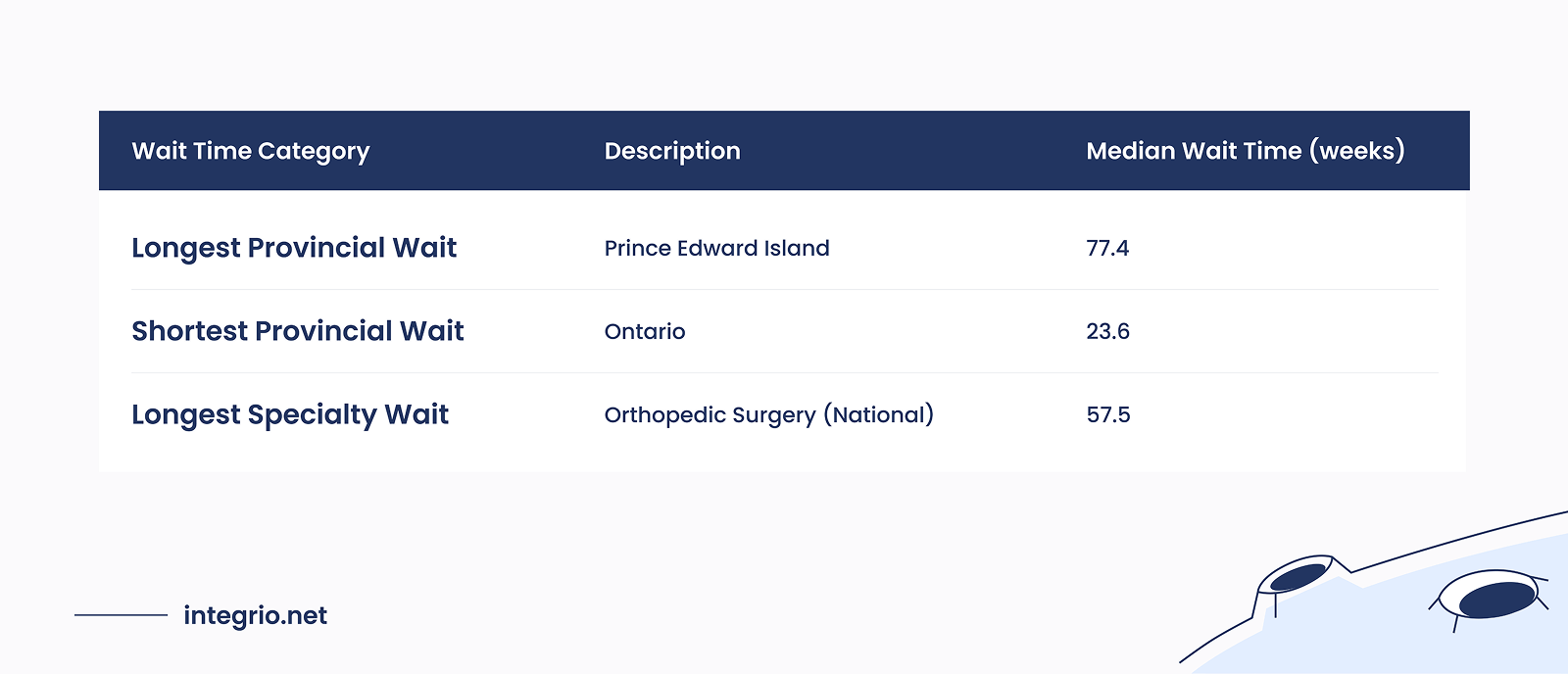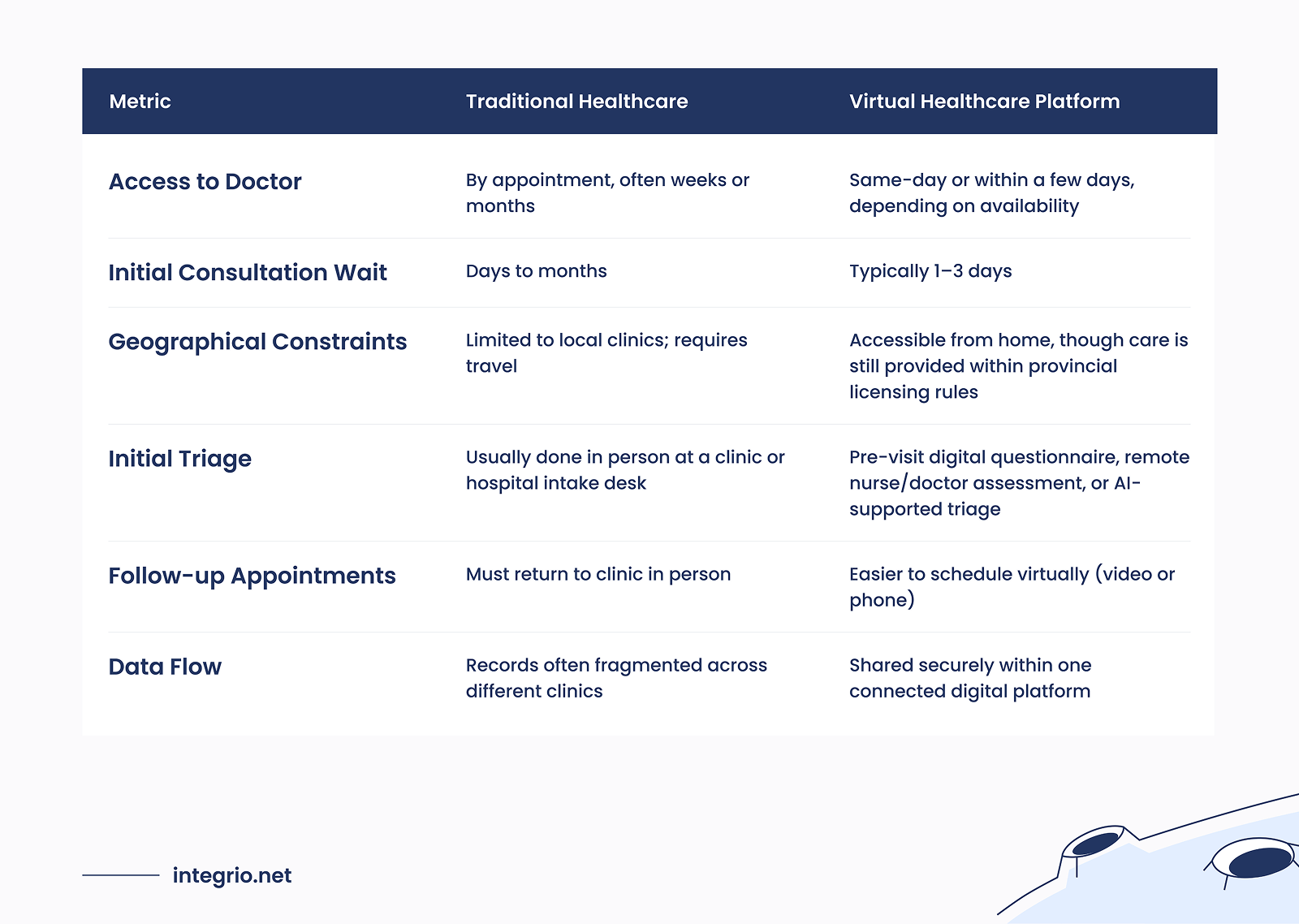How Virtual Healthcare Platforms Сan Help Canadian Clinics Handle Wait Time Challenges

While Canada’s healthcare system is often touted as superior to the US one and used as an example of equal availability, the reality for patients is somewhat different. People may wait for weeks or even months to schedule an appointment, even for routine procedures such as blood work, physical exams, or eye exams. This would be troubling even if it were a regional thing, but it’s a systemic problem that plagues all of Canada.
Today, we’d like to address this issue and explain how virtual healthcare platforms can help patients access their necessary care more quickly. Diagnosing the problem and pointing out ways to address it with modern technology will make it easier to see a new way forward. We hope that this primer will inspire medical businesses to revitalize their services and provide top-shelf healthcare.
Why Canadian Patients Face Some of the Longest Healthcare Wait Times
Extensive waiting is a known problem, but nobody feels it more acutely than patients. Surveys show that in 2018-19, some already had to wait as long as four months to get elective surgery, and a 2021 report by the Fraser Institute highlighted a significant increase in average wait times. The data stated that a 9.3-week wait between referral and treatment in 1993 turned into a 25.6-week wait by 2021.
That kind of increase was bad enough, but a follow-up 2024 report paints an even more grim picture. In just three years, the median wait time went from 25.6 weeks to a full 30. Combine that with the 1993 information, and you’re left with a 3x increase and a desperate need to reduce clinic wait times.

A breakdown by province and specialty reveals a stark difference in medical care accessibility, depending on where a patient resides. Unsurprisingly, the longest wait is recorded on Prince Edward Island, with a staggering median of 77.4 weeks. Meanwhile, Ontario has a much better 23.6 weeks, though that number is only positive in comparison.
For specialized care, orthopedic surgery has the longest wait, at 57.5 weeks. Over a year’s wait for a procedure that could substantially improve the quality of life for a patient. It’s too easy to find this data disappointing just in terms of business efficiency, but it’s crucial to remember that it affects people’s lives and health.

Wait times have gotten so bad that there are a multitude of sites tracking how long an ER visit will take on average across different parts of Canada, including Vancouver. This massive population center regularly suffers from 5-hour ER wait times, an unacceptable standard.
Why Canada’s Healthcare System Struggles to Reduce Wait Times
Now that we’ve established the problem, let’s talk about where it stems from. Our list is as follows:
- Demand outpaces availability.
- No nation-wide licensing.
- One line for all.
- Outdated hardware.
- Aging population.
It’s no secret that the health industry isn’t the perfect place to work - long hours, substandard pay, stressful environment. This leaves many hospitals understaffed and struggling to cover the influx of patients.
That issue is exacerbated by the fact that medical experts are licensed on a provincial basis. So, an Ontario doctor couldn’t simply move to PEI, thereby alleviating that province’s need for staff. Such lack of flexibility makes the whole system more rigid and is a direct result of Canada’s healthcare relying on old methods.
Canadian clinic workflow management is majorly slowed down by a reliance on paper, as the latest data shows that only 29% of doctors use electronic methods for data sharing. This further slows down clinical processing, already suffering from the fact that every patient is in the same queue. Regardless of how minor or complex one’s case is, all patients have to bide their time in the ER waiting room.
Coupled with a lack of private alternatives and an aging population that requires more and more medical attention, you can really see why the system is bursting under the stress.
Why Virtual Healthcare Platforms Matter for Canadian Clinics
Virtual healthcare includes any digital solutions that establish a connection between patients and healthcare providers with no requirement for physical presence. This can include online appointment systems, telemedicine software, VR/AR immersive spaces, and more.
By using these, clinics provide a faster path to the initial doctor’s consultation, cutting the wait from weeks to days. It also allows patients in remote areas or with limited mobility to get medical care fast and with zero travel time.
The use of telemedicine for clinics also has benefits to the institutions themselves, including ease of monitoring and the ability to address minor cases online, leaving in-person visits for urgent matters. These platforms also help staff reduce their workload, as patients sign up online and admin work diminishes.
Virtual platforms also help retain, organize, and secure data, preventing cases of lost records or patients being instructed to do duplicate tests and exams. Doctors will be clearly able to see a patient’s history and tell what procedures they are waiting for.

Practical Steps Canadian Clinics Can Take to Improve Patient Access
While the waiting time won’t magically decrease to 0 in a matter of months, it’s still essential for clinics to begin working toward that goal. A straightforward approach is to start with healthcare scheduling software, which can optimize staff shifts and reduce the time gap between referrals and visits.
As each clinic has its own issues to contend with, many could benefit from having a bespoke tool to work with, addressing their own problems, like legal compliance or system integration. There are some good solutions in the mass market, of course, but they are not ideal for most use cases. Those who seek a higher quality, tailored to their business, can partner up with a software development company to build their own virtual platform.
Integrio Systems is just such a partner, as our office in Canada gives us a clear understanding of the local companies’ needs and the market situation. Meanwhile, our 25 years in business have allowed us to build a team of seasoned experts. As a result, we deliver secure, highly customized software designed for a specific client.
Conclusion
We’ve illustrated the many problematic factors that keep wait times prohibitively long and the path to addressing this issue through digital health solutions. Canada can reinvent its legacy scheduling and care systems to improve medical services, saving patients’ lives.
While we don’t suggest virtual platforms will boost the number of doctors entering the workforce, they can help ease the load on those who already work for the people. Setting up flexible, efficient workflows with digital tools is the first step to making a better, more equitable system. If you want to start with your own institution, get in touch.
FAQ
The simplest answer is yes, in the sense that people getting emergency services and most essential care won’t have to pay directly. That said, there are exceptions to this, such as dental work and, of course, the money to fund these services doesn’t appear out of thin air. The healthcare system is funded by taxes that Canadian citizens and residents pay.
There is a commonly used name of Medicare but it’s actually not an official designation, merely a name that people rely on to quickly and easily describe it. This applies to all inhabited areas of Canada, as Medicare covers the ten provinces and three territories.
There are several clear root causes, including a shortage of medical professionals, a reliance on outdated systems, and inadequate medical infrastructure. The answer to almost all of these is growing the number of doctors and available clinics, including private ones.
Virtual care tools get better every year, so even without looking into the future, we can already list some significant uses for them. This includes remote surgery, telemedicine consultations, therapy through virtual services, and more.
From things like improving data storage and security to patient flow optimization, going digital can guarantee that you are rendering a higher quality of services. Digital queues will speed up patient registration and syncing patient records between hospitals improves personalization.
Contact us

